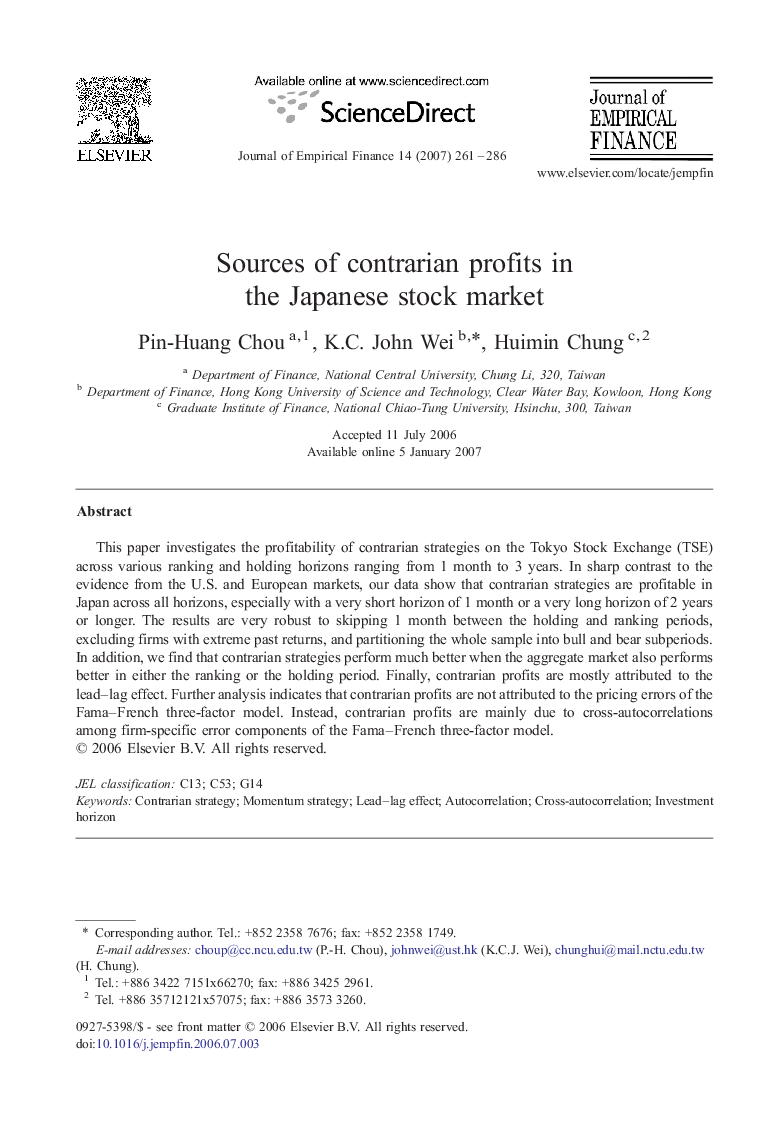| Article ID | Journal | Published Year | Pages | File Type |
|---|---|---|---|---|
| 958887 | Journal of Empirical Finance | 2007 | 26 Pages |
This paper investigates the profitability of contrarian strategies on the Tokyo Stock Exchange (TSE) across various ranking and holding horizons ranging from 1 month to 3 years. In sharp contrast to the evidence from the U.S. and European markets, our data show that contrarian strategies are profitable in Japan across all horizons, especially with a very short horizon of 1 month or a very long horizon of 2 years or longer. The results are very robust to skipping 1 month between the holding and ranking periods, excluding firms with extreme past returns, and partitioning the whole sample into bull and bear subperiods. In addition, we find that contrarian strategies perform much better when the aggregate market also performs better in either the ranking or the holding period. Finally, contrarian profits are mostly attributed to the lead–lag effect. Further analysis indicates that contrarian profits are not attributed to the pricing errors of the Fama–French three-factor model. Instead, contrarian profits are mainly due to cross-autocorrelations among firm-specific error components of the Fama–French three-factor model.
